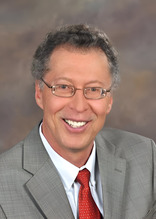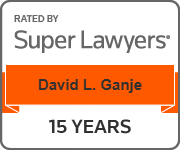This matter came before the court following plaintiff Kenneth Hostler’s motion for summary judgment filed through his attorney David Ganje. A hearing was held on June 16, 2020, in the Davison County Courthouse and supplemental briefing was ordered and said briefs due on July 2, 2020. The attorney for the Davison County Drainage Commission, Jim Davies, appeared in person while attorney for Defendant John Millan, Gary Leistico and plaintiff’s attorney David Ganje appeared telephonically. The court having now received and reviewed all briefs and heard the parties’ arguments now issues this memorandum decision.
FACTS AND ANALYSIS
Plaintiff brought this suit under SDCL § 46A-1 0A-35, alleging the Davison County Drainage Commission abused its discretion in granting a drainage permit to John Millan. The plan approved by the Commission would drain water onto plaintiff’s property through drain tile on Millan’s property. Plaintiff alleges the Commission received inadequate evidence to grant Millan the drainage permit and failed to make the proper findings prior to granting the permit.
The South Dakota Supreme Court has given the following standard for summary judgment:
Summary judgment is authorized “if the pleadings, depositions, answers to interrogatories, and admissions on file, together with the affidavits, if any, show that there is no genuine issue as to any material fact, and that the moving party is entitled to judgment as a matter of law.” We will affirm only when there are no genuine issues of material fact and the legal questions have been correctly decided. All reasonable inferences drawn from the facts must be viewed in favor of the non-moving party. The burden is on the moving party to clearly show an absence of any genuine issue of material fact and an entitlement to judgment as a matter of law.
Discover Bank v. Stanley, 2008 SD 111, · 16, 757 N. W.2d 756, 761 (internal citations omitted).
Unless an action by the Commission is quasi-judicial in nature, the standard of review of the Commission’s decision is an abuse of discretion standard. Carmody v. Lake County Board of Commissioners, 2020 SD 3, 16, 938 N.W .2d 433, 438. This case arises from the Commission ‘s granting of a drainage permit to Millan, which is not a quasi-judicial administrative action, meaning the court reviews the Commission’s decision to grant the permit under an abuse of discretion standard. See Carmody , 2020 SD 3, 29, 938 N .W.2d at 442 . Under this standard, the court ‘s “review is limited to ‘whether the [Board] acted unreasonably, arbitrarily, or … manifestly abused its discretion.” Carmody, 2020 SD 3, 30, 938 N.W.2d at 442 (quoting State o/ South Dakota, Dep ‘t of Game, Fish and Parks v. Troy Twp., 2017 SD 50, ii 17, 900 N.W.2d 840, 848). “The arbitrariness standard is narrow, and under that standard, a court is not to substitute its judgment for that of an agency.” Carmody, 2020 SD 3, 30, 938 N.W.2d at 442 (quoting Troy Twp., 2017 SD 50, 33, 900 N.W.2d at 852-53).
In enacting SDCL § 46A- I OA-20, the legislature gave the individual counties the power to enact ordinances and regulate drainage within their respective boundaries. That section states:
Official controls instituted by a board may include specific ordinances, resolutions, orders, regulations, or other such legal controls pertaining to other elements incorporated in a drainage plan, project, or area or establishing standards and procedures to be employed toward drainage management. Any such ordinances, resolutions, regulations, or controls shall embody the basic principle that any rural land which drains onto other rural land has a right to continue such drainage if:
- The land receiving the drainage remains rural in character;
- The land being drained is used in a reasonable manner;
- The drainage creates no unreasonable hardship or injury to the owner of the land receiving the drainage;
- The drainage is natural and occurs by means of a natural water course or established water course;
- The owner of the land being drained does not substantially alter on a permanent basis the course of flow, the amount of flow, or the time of flow from that which would occur; and
- No other feasible alternative drainage system is available that will produce less harm without substantially greater cost to the owner of the land being drained.
Such provisions do not necessarily apply within municipalities, but if a municipality drains water onto rural lands lying outside the boundaries of the municipality, the municipality is subject to the above provisions, if adopted by the board.
S.D. Codified Laws § 46A-1 0A-20. In accordance with this statute, Davison County has enacted its own drainage ordinance. Section 2.03 of the Drainage Ordinance of Davison County states:
Prior to the commencement of work, drainage permits are required for, but not l limited to the following:
- Construction or installation of a new surface (open ditch) or closed drain (tile).
- Any draining or filling, in whole or in part, of a pond, wetland, or lake.
- Construction of any lateral drain to a current legal drain.
- Modification of any permitted drainage with the intent of deepening or widening any drainage channel, increasing the size of any drainage tile, or extending, altering, or rerouting the drainage work in any way.
- Improvements to a drainage district or a coordinated drainage area which were not included in the original plans.
- Any drainage work completed inside municipality boundaries which will drain into the county.
Davison County Drainage Ordinance § 2.03. Section 2.05 of the Draining Ordinance of Davison County states:
At a minimum, the following factors shall be considered in evaluating the impact of a proposed drainage project:
- Flood hazard zones.
- Erosion potential.
- Water quality and supply.
- Agricultural production.
- Environmental quality.
- Aesthetics.
- Fish and wildlife values.
- Considerations of downstream landowners and the potential adverse effect thereon including consideration of the following criteria:
- Uncontrolled drainage into receiving watercourses which do not have sufficient capacity to handle the adverse effect.
- Whether drainage is accomplished by reasonably improving and aiding the normal and natural system of drainage according to its reasonable carrying capacity, or in the absence of a practical natural drain, a reasonable artificial drain system is adopted.
- The amount of water proposed to be drained.
- The design and other physical aspects of the drain.
- The impact of sustained flows.
Davison County Drainage Ordinance § 2.05.
In this case, while § 2.05 of the Davison County Drainage Ordinance requires the Commission to evaluate the plan ‘s impact on “Fish and wildlife values, “there is no evidence in the record to indicate the Commission considered such values prior to granting the permit. In fact, the presence of a federal wildlife easement on Millan’s land was not made part of the permit application and was not presented to the Commission at the hearing.
Millan argues that the presence of the federal wildlife easement on one of his properties does not render his permit for the proposed plan invalid because its presence simply means he will be placing less drain tile than what was approved by the Commission. However, this argument overlooks the Davison County ordinance which requires a permit for “Modification of any permitted drainage with the intent of deepening or widening any drainage channel, increasing the size of any drainage tile, or extending, altering, or rerouting the drainage work in any way.” Davison County Drainage Ordinance § 2.03(4). There is no language the court can find which states the Commission approves a maximum amount of drain tile and the laying of any amount of tile fewer than the maxim um does not require a new permit. Certainly, placing less drain tile than outlined on the plan approved by the Commission would constitute a modification of the pem1itted drainage by “altering…the drainage work in any way.”
Millan presented an application that lacked called-for information regarding the standards and conditions required to be considered by the Commission in evaluating a drain tile project.
Millan did not include the elevations of the inlet and outlet locations in his application, nor was this information presented at the hearing or incorporated in the Commission’s findings or decision. The application is silent where it requests “Elevation change from the inlet to the outlet (feet).” (Certified Application, Exhibit A at pgs. 4-5). The application did not show the destination for the water up to one mile, nor did it depict all of the inlet locations.
No data was presented at the hearing about the capacity of plaintiff s land or Dry Run Creek to handle the flow of the proposed water drainage. The application did not provide evidence concerning the volume of water the project drains. While this court makes no finding as to whether the permit should be granted upon reapplication, it is instructive for the Commission in so determining, that according to the Supreme Court, “it is impermissible for a dominant landowner to collect surface waters, and then cast them upon the servient estate in ‘unusual or unnatural quantities.”‘ Rumpzav. Zubke, 2017 SD 49, 12, 900 N.W.2d 601, 605 (quoting Winter/on v. Elverson, 389 N.W.2d 633, 635 (S.D. 1986)). “This is true even if the total volume of water remains the same.” Id. “Surface water cannot be gathered together and cast in a body on the property of the lower owner as to affect that neighbor ‘s land in some other way than the way in which it has been affected.” Id. (quoting Feistner v. Swenson, 368 N.W .2d 621, 623 (S.D. 1985)).
Missing from the application and not presented at the hearing in front of the Commission were those requirements designed to protect the interests of the surrounding landowners. If it is Millan’s intention to install 315,000 feet of drain tile intended solely to remove surface water onto servient lands, the application should provide all the hydrological evidence called for in the application, which must be presented to the Commission for its consideration. to protect the interests of all property owners in the area.
Therefore, because the Commission did not consider evidence on all the factors which the Davison County Drainage Ordinance requires be considered prior to granting a drainage pennit, the Commission abused its discretion in granting the permit. Also, Millan has not submitted a new application for a drainage permit and this is required under § 2.03 because placing less drain tile would not be in conformity with the plan the Commission approved.
Upon the filing of a new application for a drainage permit by Millan, the Commission should now have notice of the presence of the federal wildlife easement and should also consider all other factors which it is required to consider under its own drainage ordinance and state law.
CONCLUSION
Plaintiffs motion for summary judgment is granted. Parties are invited to submit any findings they determine necessary under the rules of procedure, and the prevailing party shall submit an order incorporating this opinion and granting the motion.
Dated this 28th day of July 2020.
By the COURT: Hon. Patrick T. Smith, First Circuit Court Judge, State of South Dakota





